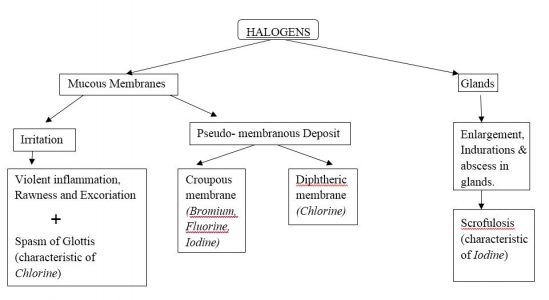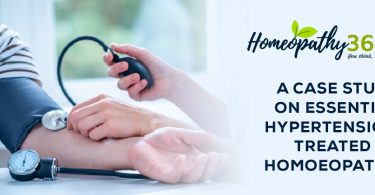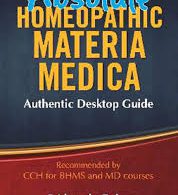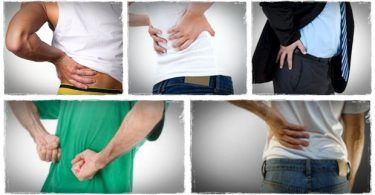 Abstract: Homoeopathic medicines prepared from Halogens have scrofulous diathesis and hence act predominantly on glandular system and also on the mucous membranes. They are unstable alone so they usually form compounds to become stable and are found in combined state in nature like Calcarea Iodatum, Calcarea Flouricum etc. Hence their individual actions are difficult to interpret from compound forms but are more known to us in different compound forms.
Abstract: Homoeopathic medicines prepared from Halogens have scrofulous diathesis and hence act predominantly on glandular system and also on the mucous membranes. They are unstable alone so they usually form compounds to become stable and are found in combined state in nature like Calcarea Iodatum, Calcarea Flouricum etc. Hence their individual actions are difficult to interpret from compound forms but are more known to us in different compound forms.
Introduction
Halogens are elements belonging to Group 7 of the periodic table.
They consist of following 5 elements (1):
- Chlorine
- Bromine
- Iodine
- Fluorine
- Astatine
Halogens have 7 valence electron in their outermost shell and need only one electron. They are highly reactive due to high electronegativity.
They have very similar chemical properties like (1):
Halogens + H+ à Acids
Halogens + Metals à Salts
Pathogenesis of Halogens (2):
- Mucous
- Membranes
- Glands

Few characteristic indications of Halogens are:
BROMIUM (3)
- Blonde patients
- Excoriating discharges
- Profuse sweat.
- Great weakness.
- Respiratory complaints-
- Spasmodic cough with rattling of mucus in larynx with suffocation.
- Fluent coryza with sneezing and corrosive soreness under the nose and on margins of the nostrils.
- Dry cough with hoarseness and burning pain behind sternum.
- Cold sensation when inspiring.
- Female Complaints – Loud emission of flatus from vagina.
- Glands – Scrofulous patients especially children.
- Left sided mumps.
- Tendency to infiltrate glands, become hard, but seldom suppurate.
IODUM (3)
- Loss of flesh with great appetite and thirst.
- Great debility, slightest exertion induces perspiration.
- Craves cold air.
- Hypertrophy and induration of glandular tissue but mammae dwindle and become flabby.
- Scrofulous diathesis, with dark or black hair and eyes.
- Palpitation, worse from least exertion.
- Thermally Hot.
- Relieved while eating and relieved while in motion.
- Discharges of Iodine are acrid.
- Nervous and excitable; afflicted with tremor.
- Torpidity and sluggishness.
CHLORINE (2)
- Indicated in catarrhs.
- Watery discharge from the nose, with a thin, excoriating coryza, making the nose sore, both inside and about the alae.
- Small, putrid-smelling ulcers, yellowish-white aphthae in mouth.
- Indicated in typhoid conditions; Fear of becoming crazy, or that he will lose his senses.
- Very forgetful; he cannot remember names.
- Constant fear of some impending disease.
- Painful sensation in the vertex, passing down the left side of the body.
- Worse after eating.
- Impotence produced by inhalations of the fumes of Chlorine.
Conclusion
Halogens have proved to be efficacious in scrofulous, cancerous and various other kinds of affections and still have a great scope to be explored. Iodum and Bromium are quite well proved but Flourine, Chlorine and Astatine are not well proved and need extensive proving and clinical trials to explore their inherent powers to heal the sick.
References
- Taber’s Cyclopedic medical dictionary. F.A. Davis Company. Philadelphia; 2013.
- Farrington E.A. Lectures on Clinical Materia Medica in Family Order. New Delh: B. Jain Publishers (P) Ltd; 2012.
- Boericke W, Boericke OE. Pocket Manual of Homoeopathic Materia Medica & Repertory comprising of the characteristics and guiding symptoms of all remedies. New York: Boericke & Runyon; 1906.





